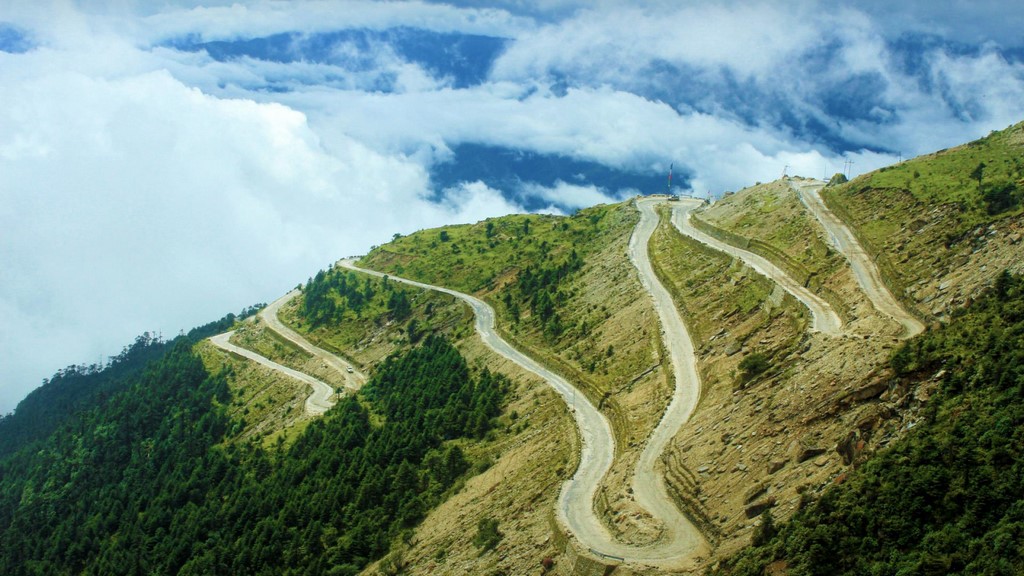Tawang, India: Exploring the Enchanting Himalayan Paradise

Nestled in the lap of the Himalayas, in the northeastern state of Arunachal Pradesh, lies the serene and picturesque town of Tawang. Perched at an elevation of over 3000 meters above sea level, Tawang is not just a destination; it’s an experience, offering visitors a glimpse into the unspoiled beauty of nature, rich cultural heritage, and spiritual sanctity. From breathtaking landscapes to ancient monasteries, Tawang beckons travelers seeking solace, adventure, and a deeper connection with the Himalayan mystique.
Historical Significance: Tawang’s history is steeped in myth, legend, and ancient lore. The town derives its name from “Ta” meaning horse and “Wang” meaning chosen, and is believed to have been named after the horse of Merak Lama Lodre Gyatso, who founded the Tawang Monastery in the 17th century. The monastery, one of the largest in India and a revered seat of Tibetan Buddhism, serves as the spiritual and cultural nucleus of Tawang.
Natural Splendor: Tawang’s allure lies in its pristine natural beauty, characterized by snow-capped peaks, verdant valleys, gushing rivers, and alpine meadows. The town is surrounded by towering mountains, including the majestic Gorichen Peak, which rises to over 6,500 meters and offers stunning views of the Himalayan range.
The Tawang Chu River, flowing through the valley, adds to the town’s scenic charm, providing opportunities for angling, rafting, and leisurely strolls along its banks. The landscape changes with the seasons, from lush greenery in the summer to a blanket of snow in the winter, creating a spectacle of colors and contrasts that mesmerizes visitors throughout the year.
Tawang Monastery: The crown jewel of Tawang is undoubtedly its namesake monastery, Tawang Gompa, perched atop a hill overlooking the town. Founded by Merak Lama Lodre Gyatso in the 17th century, the monastery is a sprawling complex of prayer halls, stupas, and residential quarters, adorned with vibrant murals, intricate carvings, and sacred artifacts.
The highlight of the monastery is the imposing three-story assembly hall, known as the Dukhang, which houses a massive statue of Lord Buddha and a collection of ancient scriptures and manuscripts. The monastery’s library, with its vast collection of religious texts and rare manuscripts, attracts scholars and researchers from around the world.
Cultural Tapestry: Tawang is a melting pot of cultures, with influences from Tibet, India, and Bhutan blending seamlessly to create a unique tapestry of traditions, customs, and festivals. The town is home to the Monpa tribe, one of the major ethnic groups of Arunachal Pradesh, known for their distinctive dress, cuisine, and folklore.
The Losar Festival, celebrated with great pomp and fervor in Tawang, marks the Tibetan New Year and is a time of feasting, dancing, and religious ceremonies. Other important festivals include the Torgya Festival, during which monks perform sacred rituals to dispel evil spirits and bring prosperity to the community.
Historical Landmarks: In addition to the Tawang Monastery, the town is dotted with several historical landmarks and cultural sites that offer insights into its rich heritage. The Urgelling Monastery, located a few kilometers from Tawang, is believed to be the birthplace of the 6th Dalai Lama, and holds special significance for Tibetan Buddhists.
The War Memorial, built in memory of the Indian soldiers who laid down their lives during the 1962 Indo-China War, is another important landmark in Tawang, serving as a reminder of the town’s strategic importance and its contribution to India’s defense.
Adventure Paradise: For adventure enthusiasts, Tawang offers a plethora of outdoor activities and adrenaline-pumping experiences. Trekking is a popular activity, with numerous trails leading to remote villages, high-altitude lakes, and panoramic viewpoints. The trek to the famous Shonga-tser Lake, also known as Madhuri Lake, offers stunning views of the surrounding mountains and is a favorite among trekkers and nature lovers.
For those seeking a bird’s-eye view of the Himalayas, paragliding is an exhilarating option, with experienced pilots guiding visitors on tandem flights over the valley. Mountain biking, river rafting, and camping are other popular activities that allow visitors to immerse themselves in the rugged beauty of Tawang’s landscapes.
Preservation Efforts: As a custodian of Tawang’s natural and cultural heritage, local authorities and conservationists are committed to preserving its pristine environment and promoting sustainable tourism practices. Efforts are underway to minimize the ecological footprint of tourism activities, protect fragile ecosystems, and raise awareness about the importance of conservation.
Community-based initiatives, such as homestays and eco-tourism projects, provide opportunities for local communities to participate in and benefit from tourism while preserving their traditional way of life. Educational programs, guided tours, and interpretation centers help visitors understand the significance of Tawang’s cultural and natural heritage and foster a sense of stewardship towards its preservation.
Conclusion: Tawang, with its breathtaking landscapes, ancient monasteries, and vibrant culture, is a sanctuary for the soul, offering visitors a glimpse into the timeless beauty and spiritual sanctity of the Himalayas. As travelers embark on a journey of discovery through its picturesque valleys and sacred sites, they are enveloped in a sense of peace, wonder, and reverence for the natural world.
Amidst the serene beauty of Tawang’s landscapes and the ancient wisdom of its monasteries, one finds a sanctuary of solace and inspiration, where the timeless rhythms of nature and the human spirit converge in perfect harmony. As we celebrate the splendor of Tawang and its unique heritage, let us also pledge to preserve and protect this Himalayan paradise for generations to come, ensuring that its beauty remains eternal for all to enjoy.




